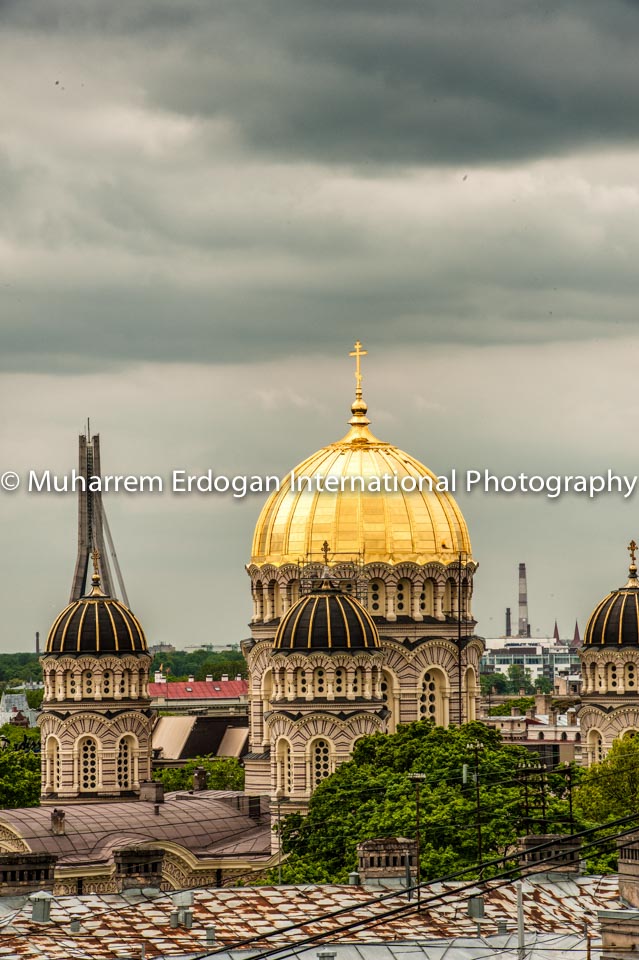Photo equipment and lens:
Nikon D700
Nikon AF-S Nikkor 70-200mm 1:2,8G ED VR II
The Nativity of Christ Cathedral in Riga:
https://en.wikipedia.org/wiki/Nativity_Cathedral,_Riga
"The Nativity of Christ Cathedral (Latvian: Kristus Piedzimšanas pareizticīgo katedrāle, Russian: Христорождественский кафедральный собор), Riga, Latvia was built to a design by Nikolai Chagin and Robert Pflug in a Neo-Byzantine style between 1876 and 1883, during the period when the country was part of the Russian Empire.
It is the largest Orthodox cathedral in the Baltic provinces built with the blessing of the Russian Tsar Alexander II on the initiative of local governor-general Pyotr Bagration and bishop Veniamin Karelin.
The Nativity of Christ Cathedral is renowned for its icons, some of which were painted by Vasili Vereshchagin.
During the First World War German troops occupied Riga and turned its largest Russian Orthodox cathedral into a Lutheran church.
In independent Latvia, the Nativity of Christ Cathedral once again became an Orthodox cathedral in 1921. Archbishop Jānis Pommers, a native Latvian, played a key part in the defence of the cathedral, including defence from the Latvian government which was extremely unfriendly to Orthodox Church in the first years of an independent Latvia.
In the early 1960s, Soviet authorities closed down the cathedral and converted its building into a planetarium. The cathedral has been restored since Latvia regained independence from the Soviet Union in 1991."
Riga:
https://en.wikipedia.org/wiki/Riga
"Riga is the capital and the largest city of Latvia. With 641,000 inhabitants (2015), Riga is the largest city of the Baltic states and home to more than one third of Latvia's population.
The city lies on the Gulf of Riga, at the mouth of the Daugava. Riga's territory covers 307.17 km2 (118.60 sq mi) and lies between 1 and 10 metres (3.3 and 32.8 ft) above sea level, on a flat and sandy plain.
Riga was founded in 1201 and is a former Hanseatic League member. Riga's historical centre is a UNESCO World Heritage Site, noted for its Art Nouveau/Jugendstil architecture and 19th century wooden architecture.
Riga was the European Capital of Culture during 2014, along with Umeå in Sweden. Riga hosted the 2006 NATO Summit, the Eurovision Song Contest 2003, and the 2006 IIHF Men's World Ice Hockey Championships. It is home to the European Union's office of European Regulators for Electronic Communications (BEREC).
Riga is served by Riga International Airport, the largest airport in the Baltic states. Riga is a member of Eurocities, the Union of the Baltic Cities (UBC) and Union of Capitals of the European Union (UCEU)."



